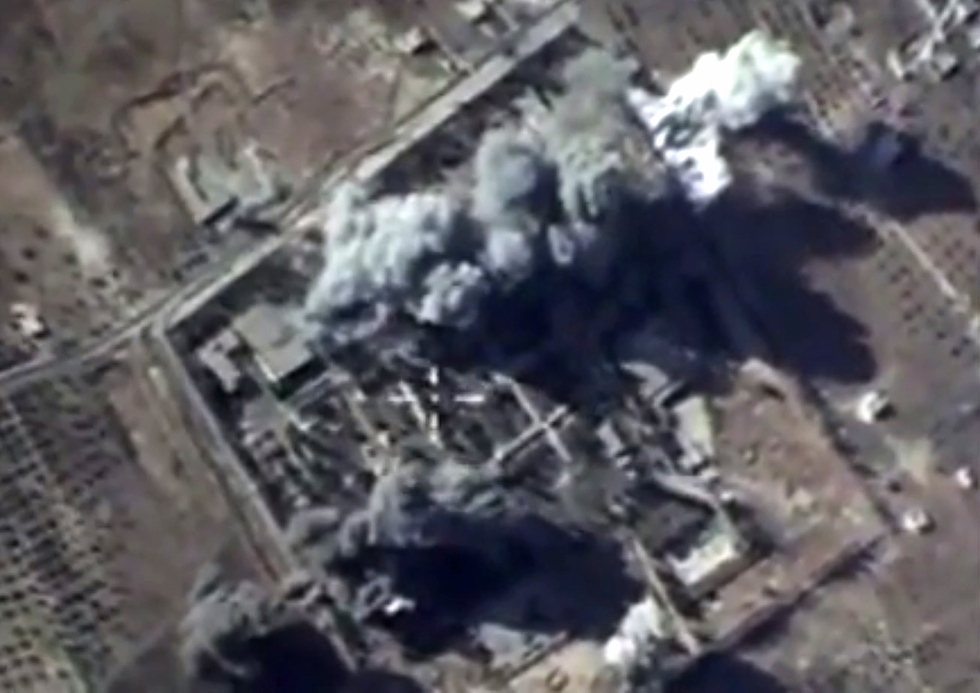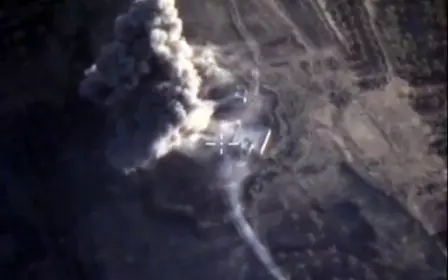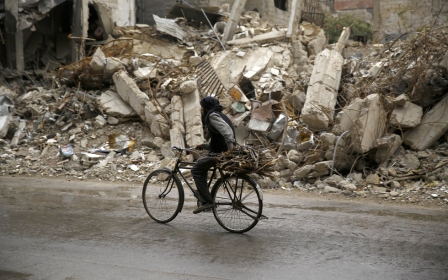Iran’s waning strategy in Syria

Iran has been investing significant resources in the Syrian conflict since the early days of the uprising in 2011. This support is not so much about President Bashar al-Assad as about maintaining Iranian interests in the Levant. After all, Syria is Iran ally Hezbollah’s lifeline; without safe passage through it, the Iran-sent weapons that form the backbone of Hezbollah’s militant-based political power would not be able to reach the group in Lebanon. But although Iran’s strategy towards Syria has certainly helped keep Assad in power, it has neither been successful at eradicating his enemies nor at winning pro-regime hearts and minds. With Russia’s escalated intervention in Syria today, Iran’s strategy in Syria is facing even greater challenges than before.
Although Iran’s deployment of Major General Qassem Suleimani - the leader of al-Quds Force of the Islamic Revolutionary Guards Corps (IRGC) - to mastermind creative ways of supporting the Syrian army has helped the army fight rebel groups, the methods used by Iran in Syria are neither wholly original nor entirely successful. The crackdown that Iran advised Bashar al-Assad to use against peaceful protesters in 2011 was a replica of what Iran did with its own dissidents back in 2009, but failed to suppress the Syrian uprising. Iran later paralleled the summoning of Hezbollah to fight inside Syria when Assad’s troops failed to crush what had become a militarised opposition with an attempt at creating a Syrian version of Hezbollah, but both versions were met with significant losses among their ranks of fighters in their battles with Syrian rebels.
Iran also played on the sectarian card, starting a process of Shia-isation inside Syria in an attempt at cultivating grassroots-level loyalty in a country that, unlike Lebanon, does not have a sizeable Shia community. This process was coupled with increased propaganda about the rise of what Iran called “takfiri jihadist” Sunni groups and their threat to stability in the Middle East. Although groups such as the Islamic State (IS) do indeed present a security risk, Iran’s invocation of them was more geared towards legitimising its intervention in Syria and to cover up its attacks on the moderate Syrian opposition.
Syria also witnessed a loose replication of the model of the Iranian Basij with Iran’s sponsorship of the creation of the National Defence Forces (NDF), citizen militias loyal to the Assad regime. The NDF carries sectarian undertones since the majority of its members are from non-Sunni communities.
Iran’s sectarianization of Syria has continued with attempts at population transfers. Iran has proposed moving Shia residents out of the villages of Kefraya and Foua in the Idlib province into the border town of Zabadani, while transferring Zabadani’s Sunni population to Sunni-majority areas like Hama. With Idlib being mostly under the control of Sunni Islamist groups and Zabadani lying on the border with Lebanon, such a population transfer would help consolidate Iran’s control over what it regards as core areas - areas that are regime strongholds or whose geographical location makes them essential supply routes for the regime and its allies.
Having the residents of such areas be hardcore loyalists would allow Iran to exert the kind of influence that Hezbollah currently exerts in southern Lebanon. There, although no population transfer policy was actively pursued and despite the persistent existence of communities from Christian, Druze, and Sunni backgrounds in the area as well as Shiites who are not affiliated with Hezbollah, the dominant faction in southern Lebanon today is the pro-Hezbollah Shia population.
To counter the negative associations of the sectarianism of this approach, Iran later tried to create a Syrian version of Hezbollah’s “Saraya al-Moqawama” (the resistance brigades). The Syrian version, militias called “Keshab,” involves both Sunni and Alawite youth as well as members from other communities. However, Saraya al-Moqawama has proven to be a rather unconvincing effort to present Hezbollah as inclusive of all Lebanese.
If Iran’s strategy in Syria continues to echo the Lebanese model, then one can safely assume that it will not be in Iran’s interests for Syrian state institutions to be strong. In Lebanon, as well as in Iraq, Iran’s sponsorship of non-state actors has been a way to exert pressure on the government even if the government may itself be pro-Iranian. Heightened sectarianism will also lead Syria towards fragmentation, especially since extremist groups like IS capitalise on sectarian divisions to increase their power.
Iran’s strategy has only been partially successful. So far, Iran’s support has been fundamental for keeping the Assad regime alive. However, despite all its investment, Iran has not been able to shift the trajectory of the conflict as a whole to its benefit. Moreover, Assad’s loyalists are mostly secular. To them, there is little appeal in Iran’s sectarian-based approach and how it would set the scene for Syria’s future. And Russia’s approach to Syria is based on retaining strong state institutions.
Russia’s increased military intervention in Syria has therefore been mostly welcomed by regime supporters. To them, an increased presence for Russia in Syria does not mean a lifestyle change, especially since there are longstanding links between the Syrian military and Russia that go all the way back to the days of the Soviet Union, during which a large number of Syrian officers trained in Moscow and even returned to Syria with Russian wives.
Pro-regime Syrians had tolerated the alliance with Iran before 2011 because it was deemed beneficial, and had acquiesced to the change in power dynamics between Damascus and Tehran after 2011 out of necessity. The Russian intervention - even though it is also not well-thought and likely to lead Russia down a regrettable path - presents those Syrians with a more attractive alternative. And although Iran had appealed to Russia for increased help this past summer out of recognition that its own strategy was not succeeding, Russia itself has not been making an effort to fully secure Iranian interests in Syria. So far, a total of 18 Iranian high-level officers have been killed in Syria, the most recent being Brigadier General Hossein Hamedani, who had led the “Keshab” initiative.
Iran is beginning to run out of options in Syria. If it cooperates with the Russian military intervention through supplying ground troops to support the Russian air force, this would result in even greater losses in Iranian lives. If it does not coordinate with Russia, it will find itself marginalised by both Russia and by pro-Assad supporters. And in either case, despite the fragmentation of the Syrian opposition, it continues to exert significant pressure on the regime and its allies. In short, Iran’s strategy in Syria is on the wane.
- Lina Khatib is Senior Research Associate with the Arab Reform Initiative.
The views expressed in this article belong to the author and do not necessarily reflect the editorial policy of Middle East Eye.
Photo: Russian air strikes in Syria may be changing the dynamics between Damascus and Tehran (AFP).
Middle East Eye propose une couverture et une analyse indépendantes et incomparables du Moyen-Orient, de l’Afrique du Nord et d’autres régions du monde. Pour en savoir plus sur la reprise de ce contenu et les frais qui s’appliquent, veuillez remplir ce formulaire [en anglais]. Pour en savoir plus sur MEE, cliquez ici [en anglais].





